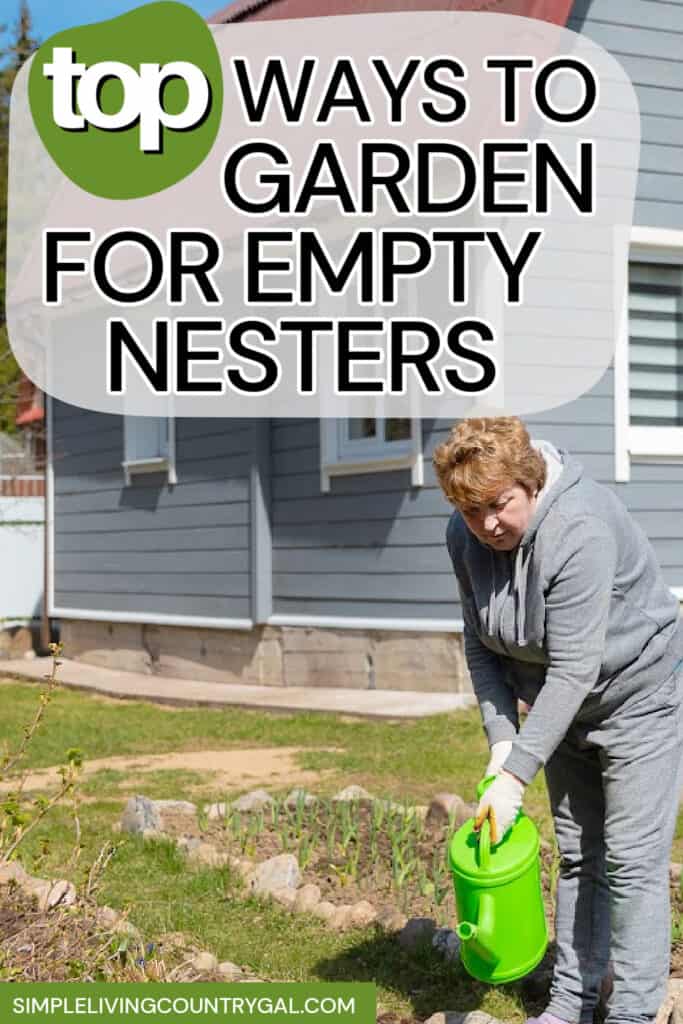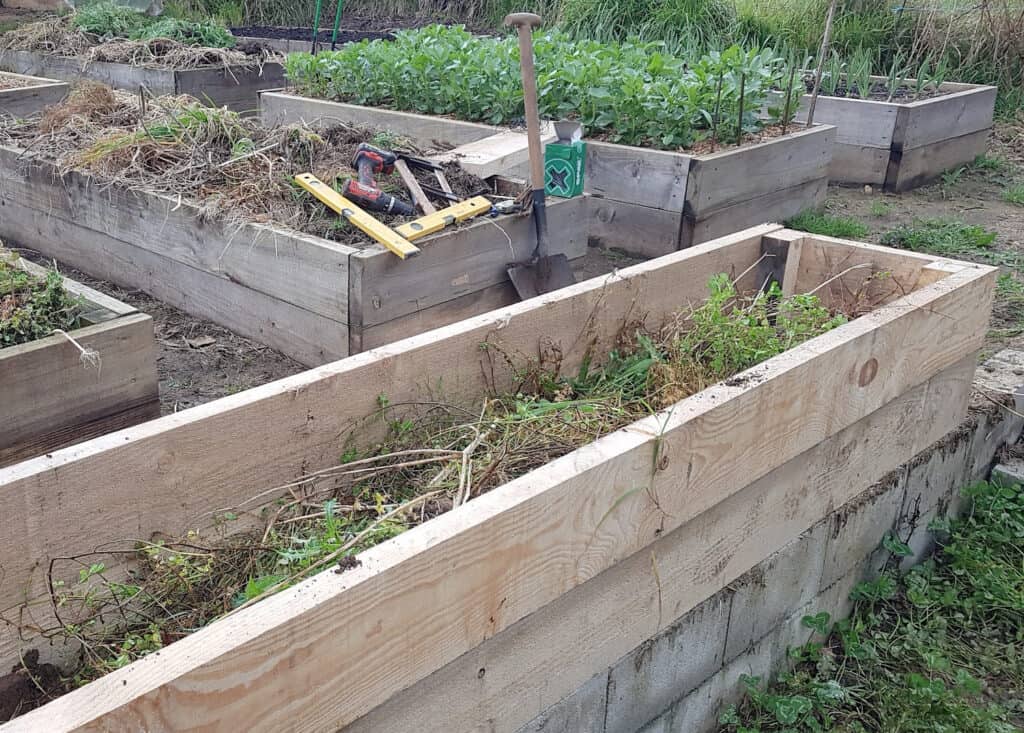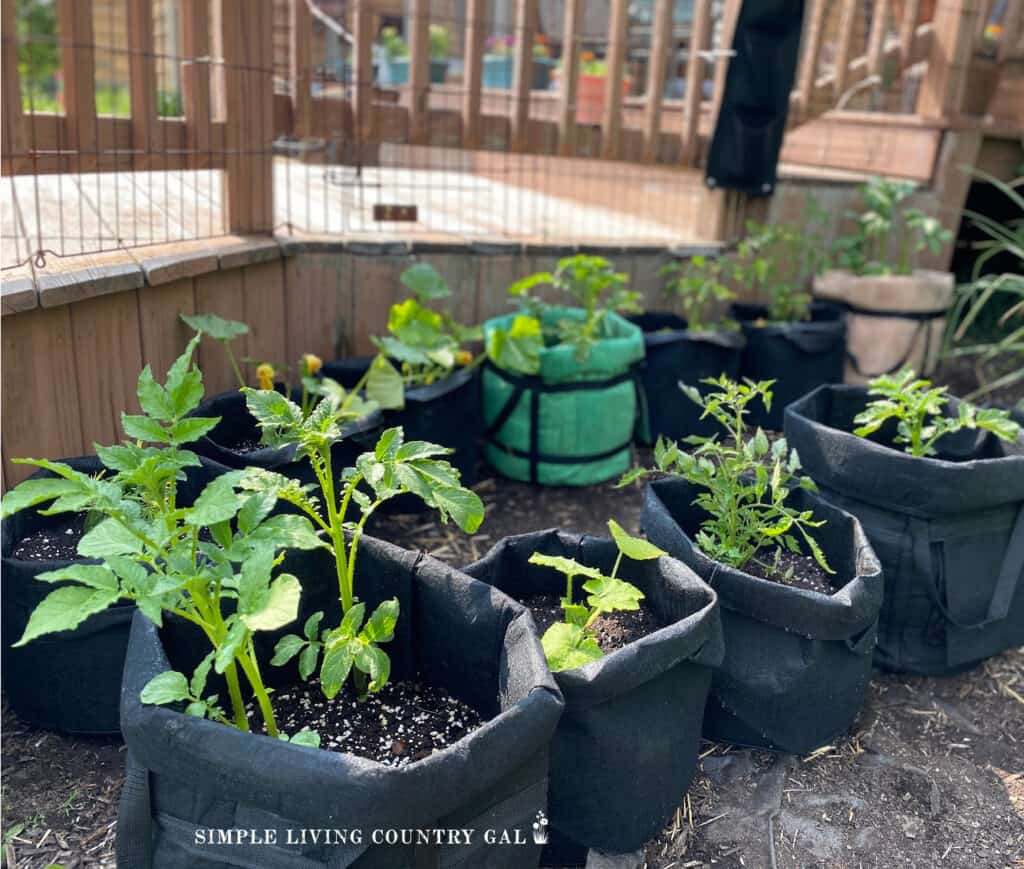Backyard Vegetable Garden Ideas
This list of backyard vegetable garden ideas will help you choose a setup that works for you and your time of life. From large setups that take lots of time to smaller space savers that will fit no matter where you live
How to Start a Backyard Garden that you love to use and pays off in dividends.

Having a garden loaded with amazing fruit, herbs, and vegetables is one of the best parts of setting up an organic kitchen on a homestead. The produce you grow is great fresh and does so well frozen, dried, or even canned. But what options are best for growing all that food, and which will work for you? Let’s explore a few of the most popular so you can see the pros, cons, and setup needed for each.
Different vegetable garden Options
Creating a backyard vegetable garden that fits where you live and your time of life can be tricky. Not everyone has a sprawling backyard where they can grow rows and rows of corn. The good news is that there are many options out there you can use to customize the best setup for you.
1. Traditional Backyard Garden
This is probably the image that pops into your mind when you think of a backyard garden. This option is open to the elements, with rows of your favorite veggies planted directly into the ground. It offers ample space to grow a wide variety of plants but can be labor-intensive.
The Best Vegetables and Herbs for a Traditional Garden
Most plants do well in a traditional backyard garden, making this a popular choice for many homesteaders.
- Sun-loving: Tomatoes, peppers, and cucumbers
- Shade-friendly: Leafy greens like spinach and chard
- Root Veggies: Carrots, beets, and potatoes
DIY Advice for Setting Up a Traditional Garden
Since size is limited to your time and stamina, you can grow larger amounts of each plant as well as a bigger variety, giving you the most harvest each year
- Choose a sunny patch of your backyard that has room for now, with the option to expand if needed.
- Clear the area of debris and existing grass.
- Prepare the soil by tilling and adding compost. Be sure to do an initial soil test to see where you are at, making it easier to amend what you have.
- For easier use, you can create rows with pathways in between sections.
- Plant according to spacing and depth requirements found on seed packets or in seedling containers.
2. Raised Bed Gardens
Raised beds are contained gardens built above the ground. This setup offers improved drainage and requires less bending. Beds can be constructed from a variety of materials, including wood, stone, or metal, and made to any height. From a few inches off the ground to tabletop height.
The Best Vegetables and Herbs for a Raised Bed Garden
Most vegetables do great in container gardens; just be sure you use a container that will give enough room for roots to grow through the plant’s maturity.
- Leafy Greens: kale, lettuce, and arugula
- Compact Veggies: radishes, green beans, and onions
- Herbs: basil, cilantro, and dill
DIY Advice for Setting Up a Raised Bed Garden
Starting a raised bed garden does take a time investment; however, once it’s done, it should last for 8-10 years or longer, especially if you keep regular maintenance on the structure.
- Select a material suitable for your aesthetic and budget.
- Choose a sunny area with room to expand if needed.
- Build the frame to your desired shape and depth.
- Line each raised bed with cardboard or landscaping fabric to prevent weed growth.
- Fill the bed with a mix of topsoil, compost, and peat moss for optimal growing conditions.
- Plant according to spacing and depth requirements found on seed packets or in seedling containers.

3. Container Gardens
Container gardens are an excellent alternative for those with limited space or poor soil quality. They allow you to grow vegetables and herbs on patios, outdoor stairs, or tucked into flower beds. Growing things inside containers is a great way to find a use for that set of buckets or flower pots taking up space in your basement.
SLCG Pro Tip: If you want to grow a container garden but do not have a container or a lot of money to invest in setting one up, you can use grow bags. Grow bags are porous bags that are made specifically for growing plants. They come in a variety of sizes and work great for all kinds of plants. You can grow an entire garden using these bags, from potatoes, tomatoes, and herbs to pumpkins and peppers.
MEKOLIFE Grow Bags – Potato Grow Bags – Thickened Fabric Pots – Large Grow Bags – Tomato Vegetables Grow Bags (6 Pack(3 Gallon))




Ideal Fruits and Vegetables for Containers
- Tomatoes: Regular slicing or cherry varieties all work great.
- Peppers: Bell or spicy chilies do great in grow bags.
- Root: Potato, carrots, and sweet potatoes do well in grow bags.
- Vining: Pumpkin, cucumber, and squash do great in larger containers.
- Herbs: Most common herbs thrive in small containers and grow well in smaller areas.
DIY Advice for Setting Up a Container Garden
Container gardening is easy to set up, which is why it is so popular.
- Choose containers of various sizes with adequate drainage holes. Buckets, flower pots, or grow bags all work great.
- Use a high-quality potting mix that retains moisture.
- Maintain consistent watering and consider adding a layer of mulch to retain soil moisture.
- Plant according to spacing and depth requirements found on seed packets or in seedling containers.

4. Vertical Gardens
Going vertical is a space-saving solution that can be as beautiful as it is functional. Trellises, hanging pots, grow bags, and stacked planting boxes can turn any wall or fence into a bountiful garden.
Beneficial Plants for Vertical Gardening
This option does better with plants that have smaller root systems.
- Climbing Vines: Sweet peas and pole beans
- Compact Herbs: Thyme, oregano, and sage
- Leafy Greens: Spinach and lettuce varieties
DIY Advice for Setting Up a Vertical Garden
Vertical gardens are a great option for tucking in plants where you have space. They tend to be a great option for patios, balconies, or back decks.
- Choose a spot where you want to set up your vertical garden. Be sure there is enough sunlight for optimal growth.
- If using a trellis, attach it to a sturdy surface for climbing plants.
- Secure hanging pots at various heights with strong hooks or a hanging system.
- Stagger stacked planting boxes to optimize sunlight and water distribution.
- Fill each container with a high-quality potting mix that retains moisture.
- Plant according to spacing and depth requirements found on seed packets or in seedling containers.
5. Straw Bale Gardens
Straw bale gardening is a unique method that gives you the feel of a traditional garden with the convenience of a container that is able to grow a large variety of plants. The bale allows for good drainage and aeration and is particularly beneficial for those who may have difficulty bending over or are dealing with rocky or clay soils.
The Best Vegetables and Herbs for Straw Bale Gardens
Most plants do great in bales of straw, making this option one of our favorites. Just be sure if you grow tomatoes you will still need to add support for each plant.
- Potatoes: Thrive in bales, and you can check the progress of spuds without disrupting the plant.
- Tomatoes and peppers: All varieties work great. One bale can grow 3 tomato plants and 4 pepper.
- Squash: The sprawling nature is well-suited to bales
- Cucumbers: Easily climb and produce sprawling vines
DIY Advice for Setting Up a Straw Bale Garden
- choose a sunny location.
- Arrange the bales in an efficient setup that uses the space effectively.
- Condition the bales over a two-week period prior to planting. Use our Straw Bale Recipe here.
- Create a planting pocket in the bale and add a good-quality soil mix for immediate planting.
- Plant according to spacing and depth requirements found on seed packets or in seedling containers.
More Straw Bale Guides:
- What is Straw Bale Gardening
- Best Plants for Straw Bale Gardening
- Straw Bale Gardening for Beginners
Choosing the best gardening setup
Your garden should reflect your lifestyle, the space you have available, and the amount of time you can commit to its upkeep. Consider the sunlight your space receives, the accessibility of water, and your physical ability to work the garden regularly.
- Assess Your Sunlight: Do you have a spot that receives at least 6-8 hours of direct sun? If not, you may be limited to growing shade-friendly plants.
- Water Access: Is your garden close to a water source? If not, consider the logistics involved in regular watering or opt for a setup that requires less water.
GREEN MOUNT Watering Wand, 24 Inches Sprayer Wand with Superior Stainless Head, Perfect for Hanging Baskets, Plants, Flowers, Shrubs, Garden and Lawn




- Time Commitment: Are you looking for a low-maintenance setup, or do you relish the daily engagement in your garden’s growth?
Garden Upkeep
Be sure to have a garden routine that allows you to enjoy your garden without feeling like you are tied to it. Routines are a great way to put garden care on autopilot.
Watering
Establish a regular watering routine, especially during dry spells or for gardens in containers that may dry out more quickly. Consider using soaker hoses or a drip irrigation system to conserve water and deliver it at the root level.
Maintenance
Frequently check for pests, diseases, and moisture levels. Mulching can help with water retention and weed prevention. Fertilize as needed, and be ready to support your plants as they grow with stakes, trellises, or other structures as necessary.
A backyard vegetable garden can be a place that is not only enjoyable but a resource for a well stocked kitchen. Keep this list of backyard vegetable garden ideas close so you can start and add to your garden setup year after year.












